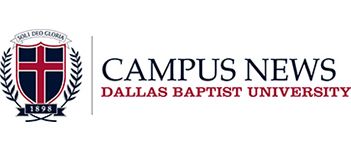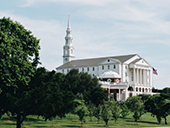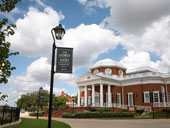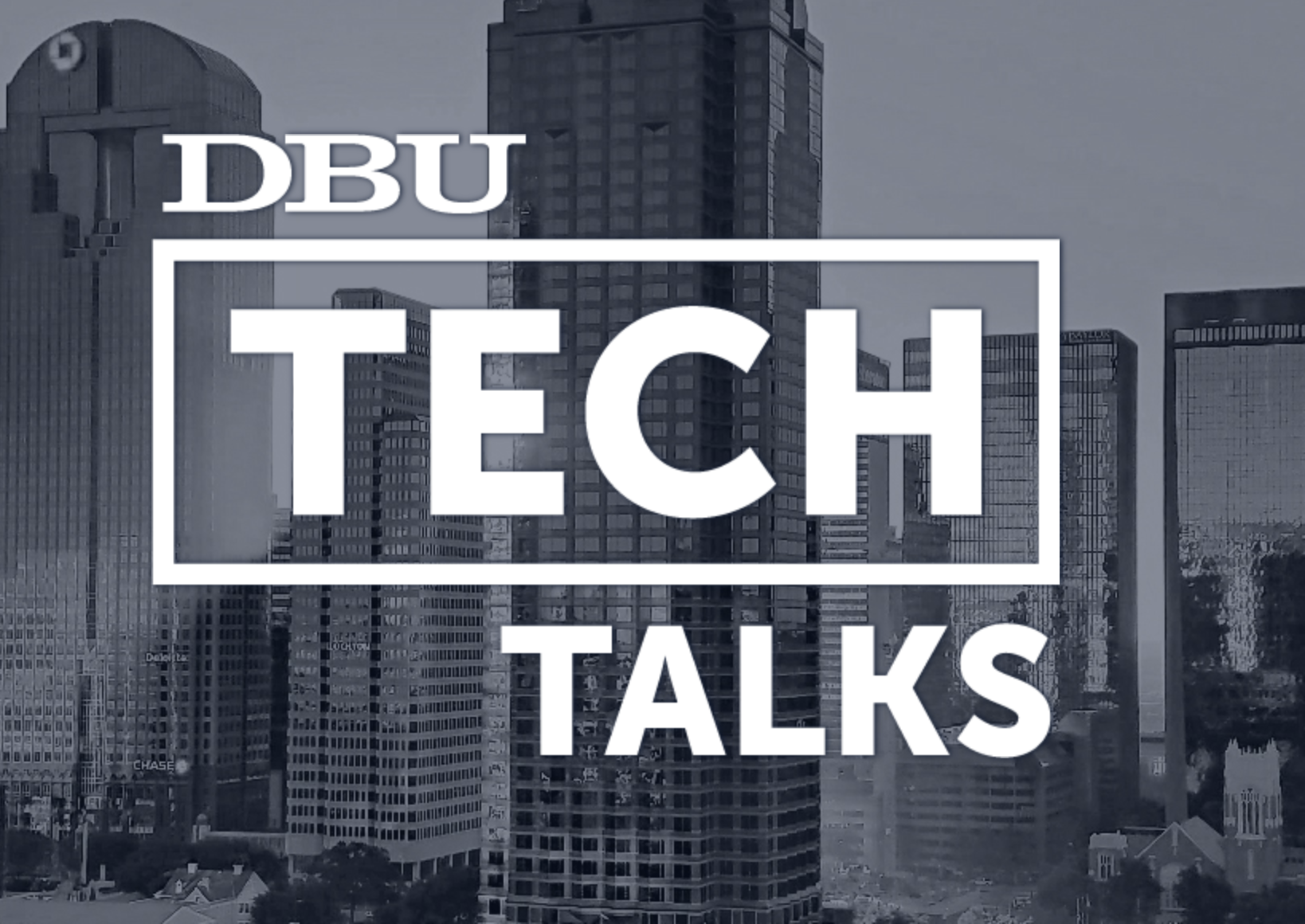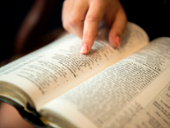A Legacy of Service to the Nation
This article is over six months old and may reference former titles for DBU faculty or staff, discontinued programs, or other details that have since changed. If you have any questions, please contact us at news@dbu.edu, or (214) 333-5172.
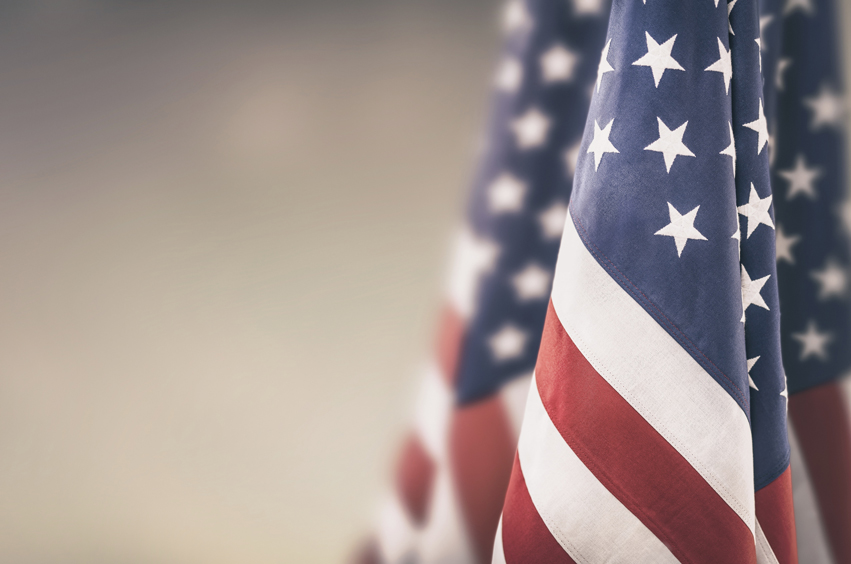
Volunteerism and service for the public good is woven into the fabric of our nation.
In almost 250 years of existence since the Declaration of Independence, citizens of the United States have earned this reputation as a people oriented toward service whether in elected or appointed positions, as employees of government service agencies, or as volunteers in a myriad of non-profit organizations and houses of worship. As we approach the Sestercentennial of 2026 as well as the twentieth anniversary of the tragedy of 9-11, a short reflection on the origins of public service in the United States as well as the history of reform movements in the United States can serve as encouragement and challenge to Americans today.
Throughout the earliest decades of European settlement in North America, mere survival in the often difficult conditions of colonial life certainly took precedence over the concept of public service. Distant leadership in the British Isles appointed government officials for a small colonial bureaucracy and, in some cases, colonial legislatures selected those who maintained civil order.
However, most colonists found little free time to engage in reform movements or service organizations. Despite these limitations, colonists still served in various capacities in times of great public need, for example, men serving in colonial militias during time of conflict and women providing support not only for these units but also serving in home and church to care for those in need.
Christians, like the Puritans of New England, emphasized community involvement in the new land by urging local and personal ministry to care “for widows and orphans” as taught in scripture. On the eve of the American Revolution, the desire to elect their own public and government officials and set their own taxes served as a catalyst for the Revolution.
With the successful end of the American Revolution and the birth of the Republic, the Founding Mothers and Fathers recognized the special need for public service in a representative democracy. In writing to his politically astute wife, Abigail, John Adams stated,
The science of government it is my duty to study, more than all other sciences; the arts of legislation and administration and negotiation ought to take the place of, indeed exclude, in a manner, all other arts. I must study politics and war, that our sons may have liberty to study mathematics and philosophy. Our sons ought to study mathematics and philosophy, geography, natural history and naval architecture, navigation, commerce and agriculture in order to give their children a right to study painting, poetry, music, architecture, statuary, tapestry and porcelain. [1]
What Adams expressed was the continuing need for public service in his generation. Contemporary leaders ultimately answered that same challenge, and certainly, the descendants of John and Abigail, as well as so many more, took that challenge to heart.
The Second Great Awakening, which began about 1801, enhanced and enlarged the desire for Americans to serve, especially beyond the scope of governmental service. While many people associate America’s awakenings with evangelism and missions, in reality the Second Great Awakening also launched a massive social reform movement encouraging Christians and religious denominations to volunteer service as part of their faith.
Following the example of their British cousins, Christians such as John and Charles Wesley, Hannah More, John Newton, William Wilberforce, and groups like the Clapham Circle, American evangelicals launched a plethora of religious organizations to address society’s ailments.
Just a sampling of the issues evangelicals addressed education, including everything from local “Sunday Schools” for poor, working children and adults to institutions of higher learning; penal code and prison reform; mental health reform; temperance organizations to reduce the sale and consumption of alcohol and address a cultural-wide abuse of alcohol; to voting rights for women; Bible and tract societies; and most importantly, the birth and expansion of the abolitionist movement to end slavery. Quaker leader John Woolman in the eighteenth century helped establish the earliest attempts to abolish slavery.
Later as the Second Great Awakening took hold, evangelist Charles Finney preached not only revival but also social reform with special emphasis on abolitionism. Black pastor, Richard Allen, the founder of the African Methodist Episcopal Church, represented another element of abolitionism that included a strong reliance upon the Christian faith among Black Americans like Sojourner Truth. These reform movements included the active participation of thousands of volunteers supported by wealthy philanthropists like Louis and Arthur Tappan. These brothers not only provided financial support but also set an example as they engaged as volunteers and as public advocates. [2]
The end of the Second Great Awakening and abolition of slavery in the Civil War did not end American public service either in official government capacity or in volunteer societies. The Civil War aided the development of nursing as a career and improved health and sanitation as well as the creation of agencies like the American Red Cross. The Industrial Revolution and the trials of rapid urbanization and massive immigration added to the challenges of integration of African Americans into culture as well as the aforementioned reform movements.
As millions of immigrants flooded the country in the last decades of the nineteenth and first decade of the twentieth century, two significant movements arose simultaneously. One, the Social Gospel Movement led by Baptist pastor and professor Walter Rauschenbusch, sought to activate Christians to address both the physical needs of the urban and immigrant poor as well the societal and political structures that created their living and working conditions.
The other, a political movement, Progressivism, originated at the state and local level and planned to address America’s societal issues through political reform and better government practices. Among many others, Frances Willard, Alice Paul, Jane Addams, Theodore Roosevelt, Woodrow Wilson, Hiram Johnson, and Charles Evans Hughes, despite their disparate backgrounds and goals, raised the bar especially for municipal and state officials, enhanced civil service reform, as well as pursuing control of monopolies, providing consumer protection, and promoting conservation of natural resources. In the 1920s and 1930s, Catholic reformer Dorothy Day continued work in the urban areas as she ministered to “the least of these.” [3]
African American churches focused upon social activism and volunteerism from their very beginnings and sought social justice throughout these same time periods as above. Following the examples of Baptists like William Simmons, E. C. Morris, and Nannie Helen Burroughs and other Christians like Amanda Berry Smith and Henry McNeal Turner who served in education and church life, Howard Thurman, Septima Clark, and Benjamin Mays prepared the way for Martin Luther King, Jr., and the Civil Rights Movement. Furthermore they also paved the way for public servants from Thurgood Marshall and Shirley Chisholm all the way to Barack Obama and as politically different as Kamala Harris and Tim Scott.
Often unsung heroes of that movement like John Lewis, Fannie Lou Hamer, Prathia Hall, Ella Baker, C. T. Vivian, and Diane Nash sacrificed mightily in order to serve not only Black Americans but also to confront the collective conscience of a country with deep wounds and scars from racism and prejudice. Likewise, Hispanic Americans have committed to advocacy as demonstrated by Cesar Chavez and seen one of their number, named the first Hispanic bishop in the American church by Roman Catholics. Frequently overlooked in those crusades were the efforts they made in order to increase the numbers of people of color in law enforcement, elective office, and integrated public and private service leadership positions. For example, their push to desegregate the military services came to fruition in 1948 when President Harry Truman integrated all branches of the U.S. armed services by executive decree. [4]
As a deeply politically divided United States emerges from the Covid 19 pandemic and as the country continues to pursue social justice issues, it is important for people to remember that hundreds of thousands of American women and men serve as public servants, first responders, in the armed services, and as volunteers in a myriad of volunteer roles.
This amazing legacy of service, something that is at the heart of the American experience, can and should unite citizens from all walks of life in celebration for the countless public and private sector servants and in a commitment to contribute in our own unique ways to serve our nation.
[1] Letter from John Adams to Abigail Adams, May 12, 1780 at https://newenglandhistoricalsociety.com/john-adams-writes-to-abigail-i-must-study-politicks-and-war/. Accessed, June 10, 2021. Antiquated spelling corrected by the author.
[2] Mark Noll, A History of Christianity in the United States and Canada (Grand Rapids, MI: William B. Eerdman’s Publishing Company, 2 nd edition, 2019), 183-85, 203-28; John Wolffe, The Expansion of Evangelicalism: The Age of Wilberforce, More, Chalmers and Finney (Downers Grove, IL; Intervarsity Press, 2007), 159-92; PBS, The American Experience, “God in America: People and Ideas, Charles Finney” at https://www.pbs.org/wgbh/pages/frontline/godinamerica/people/charles-finney.html ;and Richard Foster, Streams of Living Water: Celebrating the Great Traditions of the Christian Faith (San Francisco: HarperSanFrancisco, 1998), 137-144.
[3] John Milton Cooper, Jr., Pivotal Decades: The United States, 1900-1920 (New York and London: W. W. Norton & Company, 1990), 80-101, 173-217; Noll, 300-01, 379, 381; David Bebbington, The Dominance of Evangelicalism: The Age of Spurgeon and Moody(Downers Grove, IL: Intervarsity Press, 2005), 215ff, 246ff; and Foster, 154-56.
[4] Laura Rodgers Levens, “William J. Simmons (1849-1890), African American National Leader, Preacher, Educator, Editor, Organizer” and Michelle L. Henry, “Fannie Lou Hamer (1917-1977), Standard-Bearer for Freedom,” in Michael E. Williams, Sr., More Witnesses to the Baptist Heritage: Twenty-Four More Baptists Every Christian Should Know forthcoming from Mercer University Press, 2021; Pamela R. Durso, “E.C. Morris (1855-1922), Trailblazer for Racial Equality” and “Nannie Helen Burroughs (1879-1962) Voice for Gender Equality” in Michael E. Williams, Sr., Witnesses to the Baptist Heritage: Thirty Baptists Every Christian Should Know (Macon, GA: Mercer University Press, 2016), 121-27, 169-74; Noll, 315-19, 415-21; and James T. Patterson, Grand Expectations: The United States, 1945-1974 (New York and Oxford; Oxford University Press, 1996), 150.
The Institute for Global Engagement is a Christian, non-sectarian think tank dedicated to addressing issues in the public square with biblical distinctiveness. The mission of the IGE is to be a moral and spiritual catalyst for renewal in our culture. Founded in 2015, the IGE values the biblical narrative, thoughtful consideration, and gracious civility.
Dr. Michael E. Williams, Sr., is Professor of History at Dallas Baptist University
